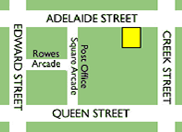DVT and sleeping pills
July 28th, 2010
Many travellers are desperate to sleep on the aircraft, but many don‘t understand the risk they are taking if they take a sleeping pill. It seems so simple to just take a sleeping pill. They want to sleep and avoid the discomfort of the flight. They want to just wake and it all be over. Sadly, on an aircraft, it is good for you to be uncomfortable. It is not healthy to sleep in the sitting position. When you are uncomfortable you move around, rise from your chair for a walk, go for a drink etc. This keeps the blood flowing, and stops clots forming.Great to get some publicity, on the need to avoid sleeping pills on aircraft. (For the record, I told the journalist I was from the Travel Medicine Alliance.)
.
from a traveller who had a DVT.
.
“I got on the plane very dehydrated after a bit of partying, and was really tired so I just slept for 8 hours. When I woke up I just thought one of my legs was a bit stiff”
.
TRAVELLERS THROMBOSIS/ DVT
.
Prolonged sitting leads to a blood clot (thrombosis) forming in the deep veins of the calf, upper leg or even pelvis – hence the term DVT (Deep Vein Thrombosis). This may occur just as easily in business or first class travel as in economy class. It can occur after prolonged travel on a train, bus, car or aircraft.
A DVT is more likely in persons
- travelling more than 12 hours,
- those over 50 years of age,
- those with a tendency to clot,
- persons with cancer, or
- persons recently hospitalised or with a leg in plaster.
Not all DVT’s lead to pulmonary embolism. The symptoms of DVT range from nothing at all, to a mild soreness or swelling in one leg. Serious problems occur when a piece of the clot breaks off and is swept via the circulation to the lungs – this is called a pulmonary embolism.
.
If this clot is large,it can block the blood supply to the heart and be fatal. In October 2000 the media publicized the case of a young woman who suffered this rare event: She died from pulmonary embolism after a flight from Sydney to London.
DVT is a very rare cause of death in travellers; however, even small clots can damage the lungs permanently and mean you have to take long term anti-clotting drugs, which disrupts your lifestyle and exercise tolerance.
.
So what can you do?
.
Think of …. W. A. L. C.
Water – Drink plenty during the journey. The air in a plane is very drying. One glass of liquid every hour will help maintain your body fluids. Fruit juice and water are best. Avoid fizzy drinks: low cabin air pressure makes the gas in your stomach expand by up to 20%, which will make you to feel bloated.
Activity – Exercise your legs and walk around the plane when possible. Exercise also helps prevent swollen feet. Exercise is especially important if you are pregnant.
Luggage – It must not press on the back of your legs. Remove bulky objects from your back pocket. Put a pillow in the small of your back. Crossing your legs interferes with the circulation and puts uneven strain on different parts of the body so minimise this if you can.
Compression stockings should be worn if prescribed, especially if you are over 50 years of age, or you have any increased risk of clotting.
.
Aspirin has been shown to stop arterial clotting, and heart attacks in persons with known cardiovascular disease in low daily doses, but its effectiveness at preventing clots in veins is not proven. It is not routinely recommended for air travel: the risks of side effects (e.g. bleeding in the gut, asthma) are greater than the benefit.
.
Many people ask about DVT and varicose veins
.
There are two types of veins in your leg – deep veins running inside the calf muscle and surface veins running just under the skin, on top of the muscle. It is the clot in the deep veins that are serious. If a surface vein becomes permanently dilated or swollen, it is known as a varicose vein. Varicose veins may swell after a long flight. You can sometimes feel a clot in these surface veins – it feels like a hard lump in the vein: a clot in the surface veins is usually harmless.
.
Not all compressions stockings are the same
.
Compression stockings prevent general leg swelling (oedema) and also Deep Vein Thrombosis. Usually class 1 rated compression stockings (18-21mm) to the knee are recommended. Class 2 rated stockings (23-32mm) may be recommended for persons at higher risk. Wear rubber dishwashing gloves to make it easier to put them on. Stockings should feel comfortable once they are in place.
.
Alcohol and food in moderation
.
Excessive alcohol or caffeine will make in-flight dehydration worse. Also alcohol tends to immobilise one, and so perhaps increases your risk of thrombosis. The boredom factor does make eating entertaining, but of course your body needs less food than normal, when you are just sitting.
.
Sleeping
.
An eye mask may be useful to block light. A travel pillow will reduce neck strain from sleeping upright. Familiar (gentle) music may help.
.
Sleeping tablets
.
As noted above, sleeping tablets are not recommended on aircraft, since they tend to immobilise you and increase your risk of thrombosis.
.
In flight exercises
.
Follow the instructions given on the plane. One of the most important exercises is to reach for another glass of water!
Leave a Reply




Wow! This is a bit scary. I didn’t realize that you could get a blood clot just from taking a long flight. Thanks for the information, and I’ll definitely remember to get up and move when travelling!
Wow! I never knew that DVT can be so bad. I serisouly thought you just get a stiff leg and that’s it.
Thanks for the insight!
Dominik